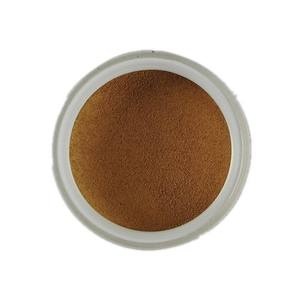Reinventing Earthworks: The Science, Innovation, and Future of Soil Stabilizers in Sustainable Infrastructure Development air entrainment agent
Introduction to Dirt Stabilizers: Design Ground Security for Modern Construction
Dirt stabilizers have emerged as essential devices in civil engineering and framework development, offering a scientifically innovative approach to boosting the mechanical buildings of weak or unpredictable soils. These chemical or mechanical agents improve soil stamina, reduce disintegration, and increase load-bearing capability– making them necessary in road building and construction, incline stabilization, foundation support, and environmental removal. As environment change and urbanization area unprecedented pressure ashore use, dirt stabilizers are playing a main duty in developing durable, economical, and environmentally lasting earthworks.
(Soil Stabilizer)
Category and Devices of Activity
Dirt stabilizers can be broadly classified right into chemical, organic, and mechanical types. Chemical stabilizers include lime, cement, fly ash, polymers, and colloidal suspensions that react with soil particles to create solidified matrices or boost cohesion. Biological stabilizers include microbial-induced calcite rainfall (MICP) or plant-root support to bind dirt naturally with time. Mechanical stabilizers such as geotextiles, grids, and nails supply architectural assistance without altering dirt chemistry. Each technique runs through distinctive systems– from ion exchange and hydration responses to physical complication– providing tailored options for different dirt types and job needs.
Applications Across Civil Design and Environmental Projects
The versatility of dirt stabilizers makes them suitable throughout a wide spectrum of design techniques. In road construction, they make it possible for the use of in your area available materials by transforming weak subgrades into steady bases, lowering the demand for imported aggregates. Incline security tasks benefit from polymer-modified soils that stand up to surface area drainage and stop landslides. In mining and oil sands operations, soil stabilizers help regulate dust exhausts and reclaim abject landscapes. Urban stormwater monitoring systems likewise incorporate these modern technologies to enhance permeable sidewalks and bioswales. Their ability to meet both functional and eco-friendly purposes placements soil stabilizers as essential enablers of modern infrastructure resilience.
Advantages Over Standard Soil Enhancement Techniques
Contrasted to standard approaches like deep compaction, dirt nailing, or excavation and substitute, dirt stabilizers supply considerable benefits in regards to expense, speed, and environmental effect. They reduce construction waste, decrease transport requirements, and lower carbon impacts by utilizing industrial by-products such as fly ash or slag. In addition, several modern stabilizers can be used sitting– without considerable excavation– minimizing labor intensity and job timelines. Their compatibility with automated spraying systems and accuracy shot methods additionally enhances application accuracy and performance consistency throughout large developments.
Technologies Driving Next-Generation Dirt Stabilization Technologies
Recent improvements in material science and biotechnology are pushing the boundaries of what dirt stabilizers can attain. Nanoparticle-based formulas such as nano-silica and graphene-enhanced polymers provide superior bonding and resilience at reduced dosages. Bio-inspired stabilizers using enzyme technology or microbial processes supply eco-friendly alternatives that weaken safely with time. Smart stabilizers geared up with responsive launch devices are being created to adjust to moisture variations or temperature adjustments during healing. These innovations not just broaden the efficiency envelope of dirt enhancement yet additionally straighten with international sustainability objectives.
Challenges and Environmental Considerations
Regardless of their benefits, soil stabilizers encounter difficulties pertaining to long-term sturdiness, regulative conformity, and ecological influence. Some chemical stabilizers might seep into groundwater or modify dirt pH, affecting neighborhood environments. Naturally degradable alternatives usually deal with performance under extreme climatic problems. There is likewise variability in efficiency relying on soil make-up, compaction levels, and curing conditions. To deal with these issues, scientists are concentrating on life-cycle assessments, environment-friendly chemistry strategies, and crossbreed systems that incorporate mechanical and chemical stablizing to optimize effectiveness while lessening environmental trade-offs.
Market Patterns and Global Industry Development
( Soil Stabilizer)
The international market for soil stabilizers is experiencing robust development, driven by enhancing investments in transport facilities, mining recovery, and seaside strength projects. The United States And Canada and Europe lead in adoption because of strict ecological regulations and mature building and construction markets, while Asia-Pacific and Africa present high-growth possible fueled by fast urbanization and country roadway advancement. Key players are increasing product profiles, investing in R&D, and creating strategic collaborations with engineering firms and federal government agencies. Digital tools such as GIS-based site analysis and AI-driven admixture optimization are also obtaining grip, enhancing precision and scalability in soil stabilization techniques.
Future Potential Customers: Assimilation with Smart Building and Circular Economic Situation Designs
Looking in advance, the future of dirt stabilizers lies in intelligent, adaptive, and circular building techniques. Integration with Structure Information Modeling (BIM) systems will permit real-time monitoring of stabilization performance throughout a project’s lifecycle. IoT-enabled sensors installed in maintained layers can give very early warnings of subsidence or deterioration. At the same time, circular economy principles are driving rate of interest in recyclable stabilizers, carbon-negative binders, and waste-derived polymers that repurpose industrial residues. As the building market changes towards decarbonization and digital makeover, dirt stabilizers will go to the forefront of this advancement, enabling safer, smarter, and much more lasting earthworks.
Provider
Concrete additives can improve the working performance of concrete, improve mechanical properties, adjust setting time, improve durability and save materials and costs.
Cabr-concrete is a supplier of foaming agents and other concrete additives, which is concrete and relative products with over 12 years experience in nano-building energy conservation and nanotechnology development. It accepts payment via Credit Card, T/T, West Union and Paypal. Trunnano will ship the goods to customers overseas through FedEx, DHL, by air, or by sea. If you are looking for high quality air entrainment agent, please feel free to contact us and send an inquiry. (sales@cabr-concrete.com).
Tags: concrete, concrete addtives, Soil Stabilizer
All articles and pictures are from the Internet. If there are any copyright issues, please contact us in time to delete.
Inquiry us

